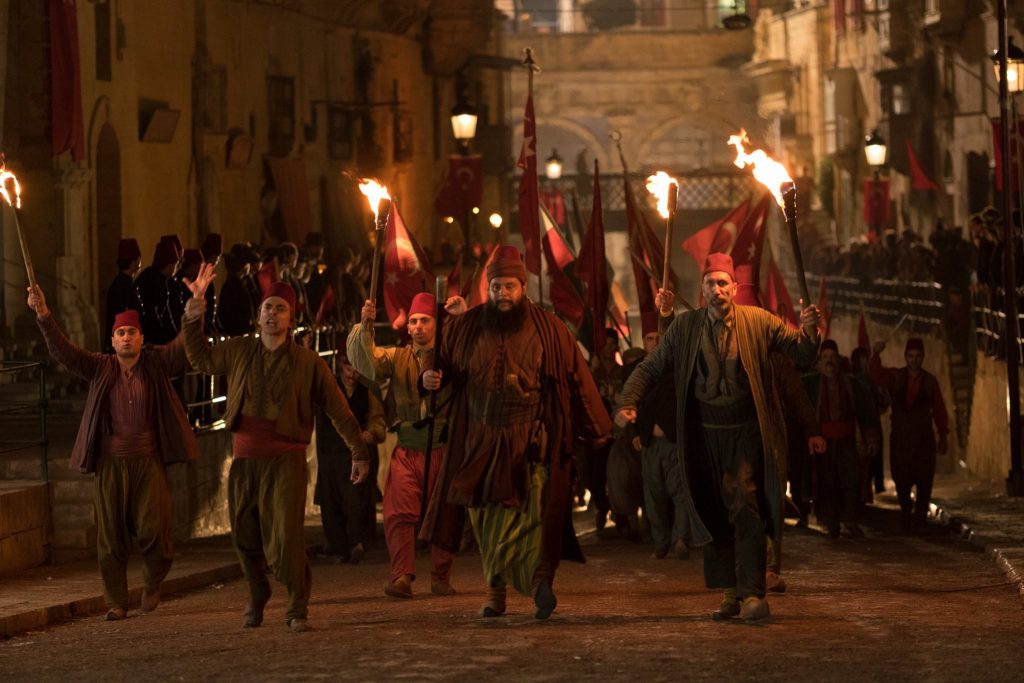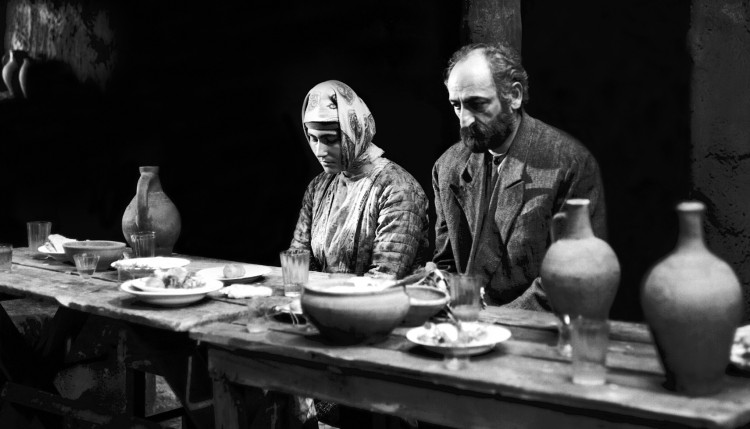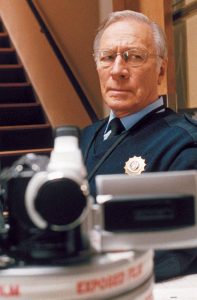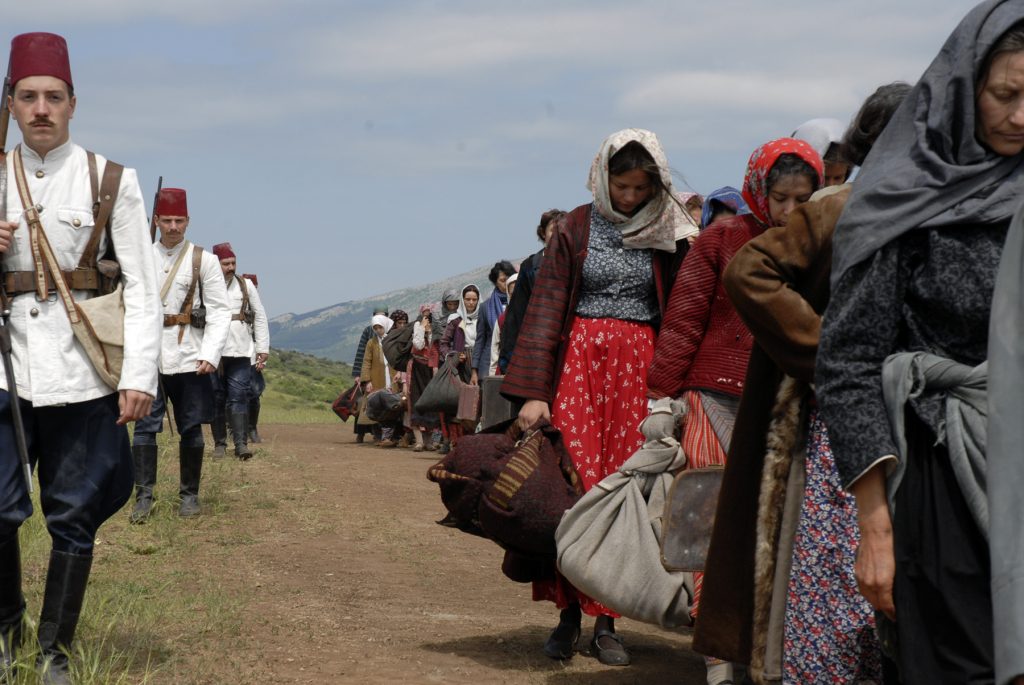With the recent release on DVD of the major motion picture “The Promise,” greater numbers of people will be able to gain insights into aspects of the Armenian Genocide. The film, starring Christian Bale, Oscar Isaac, and Charlotte Le Bon, was directed by acclaimed filmmaker Terry George, who had been involved in the production of “Hotel Rwanda,” about the 1990s genocide in Africa.
“The Promise” was an unorthodox production in several ways: financing ($100 million provided by Armenian-American Kirk Krikorian); massive numbers of pre-film release reviews that were either extremely negative or highly praising; and significant challenges and even genocide denialist-imposed obstacles in distribution.
“The Promise” is the most recent in almost a century of efforts to portray in feature films the horrors of genocide. Most of these films have appeared in recent decades and all are attempts to “describe the indescribable.”
Among the more notable of the feature films that deal with the Armenian Genocide are “Ravished Armenia/Auction of Souls” (1919), “America, America” (1963), “Nahapet” (1977), “Forty Days of Musa Dagh” (1982), “Mayrig” (1991), “Ararat” (2002), “Lark Farm” (2007), “The Cut” (2014), “1915” (2015), and most recently “The Promise” (2016). Often, those films are based on survivor memoirs or historical novels.
What is little known publicly today is that a pioneering Hollywood film from the silent-film era dealt with the Armenian Genocide. “Ravished Armenia/Auction of Souls” is the biographical account of a young orphan girl, Arshaluys Mardigian (later renamed Aurora Mardiganian), who, having witnessed most of her family being killed, managed to flee the massacres and later immigrated as a teenager to the United States. Her biography, titled Ravished Armenia: The Story of Aurora Mardiganian: The Christian Girl Who Lived Through the Great Massacres, was first serialized in the Hearst newspapers and later published as a book in 1918. The memoir was then turned into a film.

And ad for “Ravished Armenia,” also known as “Auction of Souls,” in the Times-Republican of Marshalltown, Iowa
The historical 85-minute movie was a silent film (with subtitles). It portrayed the mass deportations, rapes, and massacres of Armenians. It had Aurora Mardiganian herself as the lead character. Remarkably, the movie also featured in actual person Henry Morgenthau, the former US Ambassador to the Ottoman Empire. The film was shot in California in 1918 with a cast of thousands of extras. Initially titled “Ravished Armenia,” the movie was renamed “Auction of Souls.” It was, in all likelihood, the first major Hollywood picture to portray genocide. In a number of ways, it was a pioneering film. To cast a genocide survivor as the lead actress is rare. As a post-WWI film, it certainly challenged conventional mores regarding violence, rape, and nudity. It also raised the censorship issue, both morally and politically. Turkish opposition in later years reinforced the latter.
The U.S. film premieres took place in Los Angeles and New York in 1919. Although film screenings were initially numerous and well-attended, the frequency of airings diminished. Over time, copies of the film were lost or destroyed, or they deteriorated. No known remaining full copy exists today. The history books on the early silent film era have mostly ignored the movie “Ravished Armenia/Auction of Souls.” What had been an often seen and cited movie that helped to raise crucial humanitarian relief funds for Near East Relief was now mostly ignored either by accident, bias, or malevolent design.
The Armenian Genocide Museum in Yerevan has an important section of its exhibition devoted to Aurora Mardiganian, her memoirs, and the film. For some, Aurora Mardiganian is the “Anne Frank of the Armenian Genocide.”

American film “Auction of Souls” playing at the Princess Theater in Milwaukee, Mich. in 1919. The theater was decorated for the film, and the ushers wore Armenian garb. The photograph was published in the July 19, 1919 issue of Motion Picture News.
Franz Viktor Werfel wrote the novel “The Forty Days of Musa Dagh,” which dealt with the siege of the villages of Musa Dagh during the Armenian Genocide. The novel tells the story of one of the few examples of armed resistance by the Armenians to the deportations and killings by the Young Turk regime. The episode is also one of the few historical examples of foreign power humanitarian assistance arriving in timely fashion. French naval ships in the Mediterranean saw the besieged civilians and escorted them to safety in British-controlled Egypt. Efforts by the major Hollywood studio MGM to make a film version of the novel between the 1930s and 1970s were all unsuccessful—largely as a consequence of significant foreign pressure and interference by the Turkish government, supported by the U.S. State Department. Decades later, a lower-budget version directed by Sarky Mouradian was filmed in 1982, but achieved very little distribution.
The Greek-American Elia Kazan penned an autobiographical book about the suffering of his extended family, along with fellow Greeks and Armenians, under Turkish rule. In 1963, he turned the book into the epic film “America, America.”
“Nahapet” (1977) (Patriarch, also released as “Love Triumphs” ) is a Soviet-era film based on a novel by Hrachya Kochar and describes how a genocide survivor (Nahapet) attempts to rebuild his life amid the rugged mountains of Soviet Armenia. One of the recurring scenes in the film directed by Henrik Malyan involves scores of red apples falling from a tree, rolling into a river, and floating en masse downstream. The scene is a painful symbolic reminder of the multitude of Armenian bodies thrown into the Euphrates by the Young Turk regime during the genocide.
“Mayrig” (Mother) is the title of a 1985 semiautobiographical French-language novel by Henri Verneuil (born Ashod Malakian,) a French-Armenian author and filmmaker. The story is about a multigenerational family’s efforts to survive post-genocide exile and is a powerful account of the lingering intergenerational effects of genocide, even decades later.
“Ararat” (2002) by Atom Egoyan is a multilayered, complex drama. Egoyan’s actual film portrays a fictional director making an historical drama about the heroic Armenian people’s resistance to the Turkish military siege of the city of Van in 1915. A young Armenian boy and his beloved mother endured dreadful conditions during the bombardment and siege. She later dies as a refugee, and the young boy eventually emigrates to the United States, changes his name, and becomes the prominent artist Arshile Gorky. His melancholy twin paintings “The Artist and His Mother” are iconic and play a key role in the film. “Ararat” dwells on these works of art to convey the anguish and grieving for a deceased mother and a fractured family life. Among the reoccurring threads woven into film are the enormous impact of genocide, intergenerational transmission of trauma, and the continuing pain of ongoing Turkish denial. The closing hymn “Oor es, mayr eem/Mother, where are you?” sung by international soprano Isabel Bayrakdarian, is heart-breaking.
The novel “Skylark Farm” by Italian-Armenian writer Antonia Arslan was made into a film under the title “The Lark Farm” (Italian: “La masseria delle allodole“) (2007) by directors Paolo and Vittorio Taviani. A multi-country co-production, with a cast that included Arsinee Khanjian, the film describes intergenerational transmission of traumatic memories of the author’s extended family. It portrays a diaspora Armenian living in Italy who hopes to reunite with his Armenian family in Anatolia. But with the onset of WWI, the Young Turk dictatorship closed the border, with Ottoman Armenian civilians trapped inside to face mass deportations and slaughter. A great many perished, but some Armenian family members survived the long and perilous death marches into the Syrian Desert and eventually reached safety in Italy.
“The Cut” (2014) by Fatim Akin follows the painful odyssey of a young Armenian man who is conscripted, along with fellow Armenians, to do forced road labor, and barely survives the Turkish cutting of the throats of the unarmed Armenian workers. Now mute from the cut, this lonely survivor endures further hardship and danger and gives up hope that any in his family is still alive. He travels from one place of exile after another, eventually ending up in the United States, where to his surprise he reunites with part of his surviving family.
Garin Hovannisian’s and Alex Mouhibian’s film “1915” was released on the 100th memorial year of 2015, and the story is based on a director’s and his actress wife’s staging a play in Los Angeles about the Armenian Genocide. The historical play draws protest demonstrations outside and mysterious incidents and apparitions inside. The ghosts of the genocide from the past press powerfully onto the present in this hauntingly powerful film.
Terry George’s “The Promise” (2016) tells the story of an American reporter who befriends two young Armenians, and the three form a complex love triangle. With the onset of WWI and increasing dictatorial rule by the ultranationalist Young Turk military regime, the foreign journalist bears witness to the mass deportations and massacres of Armenians. Among the scenes portrayed is the self-defense resistance at Musa Dagh. Unlike the fate of most of their fellow Armenians, many of those inhabitants survive with the help and rescue of nearby French naval ships.
In this contemporary video-oriented era, feature films remain an important means to convey the deep and enduring impact of genocide. They can shed some light on an exceedingly dark era, but ultimately they are attempts to “describe the indescribable.”
Note: Portions of this article draw from several entries from Alan Whitehorn, ed., The Armenian Genocide: The Essential Reference Guide (Santa Barbara, ABC-CLIO Press, 2015).
The post The Armenian Genocide in Feature Films appeared first on The Armenian Weekly.
Source: Armenian Weekly
Link: The Armenian Genocide in Feature Films






